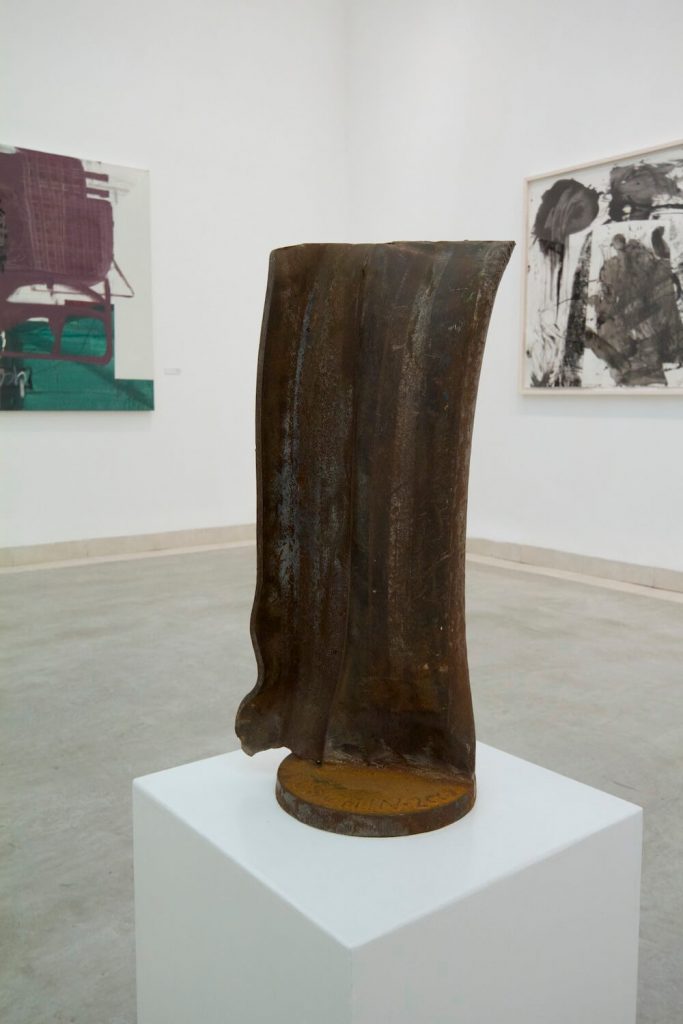Substance & Stain [Melachtam]
The second exhibition in the project on the occasion of Yona Fischer’s eightieth birthday and the tenth anniversary to the passing of Moshe Kupferman
Yael Burstein, Yaacov Dorchin, Atar Geva, Moshe Gershuni, Moshe Kupferman, Hila Laviv, Tomer Sapir, Gal Weinstein
The Hebrew title of the show Melachtam lends itself to two different readings: as a composite word that describes the appearance of a multitude of stains, and as one stratified word concerning craft attributed to the third person plural.[1] The double meaning is also contained in the subject of the exhibition and its English title, which wish to intertwine a modernist, one might even say sublime, practice that deconstructs the composition and engages with one formal element – in this case a stain – and traditional, craft-based practice that valorizes handiwork and the gesture of the master. Similar duality is also embodied in the art of Moshe Kupferman, which is characterized by minimalistic grid and rhythm, alongside free and expressive gestures, and serves as a central point of reference in the exhibition.
“[…] It stands to reason that in an industrial society there is no longer any sense in specializing in the craft we call painting” wrote Thierry de Duve in The Readymade and the Tube of Paint (1986).[2] All the while, Kupferman does not cease the practice of painting. As a meticulous craftsman, he continued to come on a daily basis to his atelier, in which he developed his unique expertise as a painter practicing his craft throughout the years. Each of the artists participating in this show is characterized by a different type of material-based practice: drawing in ink or steel wool, industrial paint on canvas, collage, or cellophane and concrete objects. The word “craft”, traditionally associated with the skill of the craftsman, is shifted in this context to the skill embodied in the original language of the artist.
Saturated areas of paint with relief-like texture and quality, testify in the featured works to the staining as a result of the process of working in layers. Each layer, opaque or transparent, exposes or divulges a layer beneath it as an inseparable part of the visible surface. The artists do not necessarily belong to the Kupfermanesque painting school, of which the layer is a key feature, but rather work in contiguous fields. Moshe Gershuni undoubtedly recalls the use of red paint in the crucifixion scene in Matthias Grünewald’s Isenheim Altarpiece of 1515, which reminded him of an abstract painting: “[…] I am fascinated by the red stain, and it conjures up things; shape as an echo of things. When I work I am a drum or a vessel that reverberates significant things, and you need to find out how not to block it completely.”[3] That is also the underlying structure of the show, in which the gesture of staining reverberates like an echo, each time in a permutation.
“Kupferman liked to use the term ‘summoning’, when speaking about his own work, in reference to and characterization of a phenomenon which on the one hand he assumes responsibility over, and on the other hand he allows the phenomenon to take place,” wrote Yona Fischer.[4] Accordingly, we could say that the works answered this summoning in their attempt to address the manifestation of staining – in line, material, or color – which gains its validity, meaning, and accountability vis-à-vis Kupferman’ painting.
In a new series of works from 2012 Gershuni presents us with blood-red staining, which brings to mind the renowned blood stains in his 1980s soldiers’ works, while here it appears controlled and elegant against a green pattern. The stain emerges and spreads like a disease, but the green round glass marks above are organized and precise, and restrain the wild, the erupting, and the inflammatory. Likewise, in Kupferman’s works the gesture of staining performs the opposite action, by interrupting – from above or below – the order of the ruler. The characteristics of Gershuni’s works, such as the harmony of contradictions, and the marriage of wild and restrained, free and calculated gestures, are echoed back in the work of Yael Burstein. Her collages incorporate fragments from old photographic magazines taken out of context, melted into imagined pieces of nature and landscape alongside fragments of construction, culture, and urbanism. In their formal juxtaposition carrying three-dimensional character, they produce a new piece of landscape, which is based on opposing images, turns the spotlight on abstract values, and disrupts the familiar outlook.
The treatment of landscape, nature, and organic elements in Burstein’s raw materials is reiterated in other works in the exhibition. In the tactile paintings of Atar Geva, which hint at his origin of earth works and organic surface translated to formalist and material elements. From a bird’s eye view, they could be interpreted as a topographical map, whose flooded, runny, and percolating patches of paint allude to the various climates conditions on the ground: swamps, puddles, or dry soil. An equally complex attitude is found in the works of Tomer Sapir, which display a mixed technique that integrates the organic with the artificial, the fauna with the flora, the prehistoric with the archaeological. In this instance, the origin of their topographic nature is in the layering of different materials and textures, which produces a new hybrid that reveals stratification while it is experienced as one whole. The whole is comprised of the multitude of individual fragments that function as independent entities; deceitfully oscillating between the familiar and the foreign, the known and fabricated, in an endless exploration that searches for primordial organic realms. The stain as a new contemporary language continues to reverberate in the material, the shape, and the color.
We encounter the use of fragmentation again in Yaacov Dorchin’s collage work, made of re-used sheets of paper that carry the traces of an earlier print, on which he drew in ink before cutting and pasting, signing with the Hebrew word for “turtles”. The organic curved shape of the turtle’s shell, as well as its surface, are replaced by the brushstroke, whose independent isolated expression is realized in the rusty iron sculpture positioned in front of the collages in the exhibition’s space. This gesture alludes to Kupferman’s gestural brushstrokes, as well as Geva’s, in an attempt to disrupt the ordered geometric rhythm. The full weight of the iron, which stood still in the image of a quick brushstroke, meets Hila Laviv’s installation that seems to look back at it with a smile. Laviv’s site-specific installation is comprised of color cellophane paper and clear sellotape, and stands out in the lean reduction which is a typical attribute of her works. The point of departure is a familiar figurative image – in this instance the image of a tree from a children’s book, which underwent a process of abstraction, distillation, and reduction. Its familiar shape is only hinted: the tall tree top, in the form of two transparent green cellophane rectangles, marks the upper border of the composition high on the white wall, and brings to mind Kupferman’s approach to the act of painting, which he started by painting the white canvas green. In both cases the green, to use Kupferman’s words: “[…] is not mixed with any other color; it is embodied, always, in the shape of a uniform surface; it has no texture, is not treated,” and furthermore he added: “it appears, meaning it is there.”[5] “The Green Triumphs,” determined Gershuni by writing these words on one of his works. In Gal Weinstein’s work, expanding amorphous shapes in vivid green one would expect to meet in a dense forest, become a faded, sick, and burnt monochrome that shifts on the spectrum between black and yellow. The fire work, made by drawing with steel wool, produces an organic texture that returns in is shape to the industrial raw material in its original state. A landscape outline, which is also an outline of abstraction, attests to the possibility of one fire in a forest of many trees, like a bright shape that threatens the darkness.
This exhibition is the second in a yearlong project marking the eightieth birthday of Fischer, who has become identified with the Kupferman Collection, which he accompanied from its nascence. The project wishes to trace Fischer’s curatorial work and examine his contribution as it is embodied in the avant-garde and the fostering of Israeli Modernism.[6] The exhibition that launched the project, Beyond the Line (curator: Nimrod Reitman) sought to point at the transgression of the line, outside the grid and towards the delineation of a new, wild, young, and avant-garde grid, which always looks for opportunities to disturb the line – while Substance & Stain exhibition that concludes the project, implements the element of disturbance, the gestures that undermine the grid and set it free. The exhibition literally seeks to go beyond the discussion surrounding Fischer’s avant-garde curatorial practice and follow in his footsteps by exhibiting young artists and exposing new contexts that challenge the discourse and disturb its ranks. The exhibition is characterized by the diversity of generations, styles, media, and techniques that have an affinity to material and its ability to manifest in eruptions of stains that correspond with the works of Kupferman, which this year we mark the tenth anniversary of his death. His abstract and tight painting, withdrawn yet aware of its interpretations, still summons and allows new occurrences in local contemporary art.
Irit Carmon Popper, exhibition curator
[1] The Hebrew word for stain in the exhibition’s title also contains two possible meanings, and is commonly used in Israeli art writing to describe shapes delineated by paint, rather than line, in addition to the common meaning of stain (t.n.).
[2] The Hebrew translation was published in 1996 the Israeli art magazine Studio 68.
[3] Sara Breitberg-Semel (editor), Gershuni, exhibition catalogue, Tel Aviv Museum of Art, Tel Aviv, 2010, p. 168 (in Hebrew).
[4] Yona Fischer, 1972 – Three Generations, exhibition text, Kupferman House, 2008.
[5] Kupferman, in Yona Fischer (editor), All the Way and Another Step – Moshe Kupferman: Works from 1962 to 2000, exhibition catalogue, the Israel Museum, Jerusalem, 2002, p. 144 (in Hebrew).
[6] From: Nimrod Reitman, Beyond the Line, exhibition text, Kupferman House, 2013.
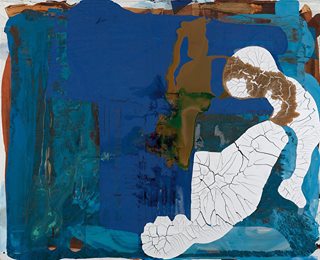
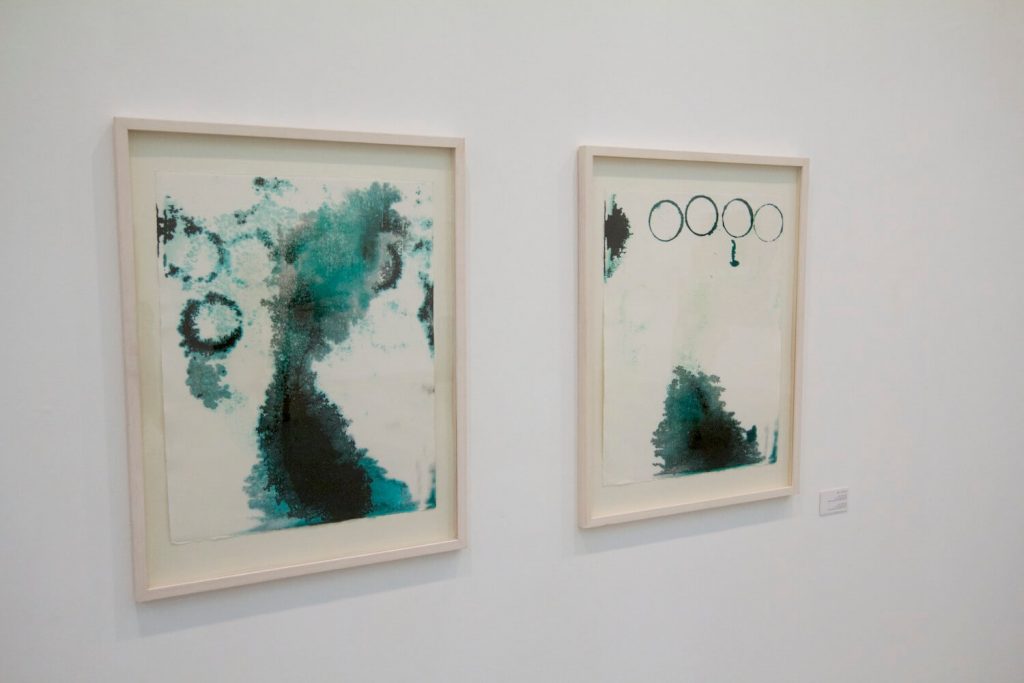
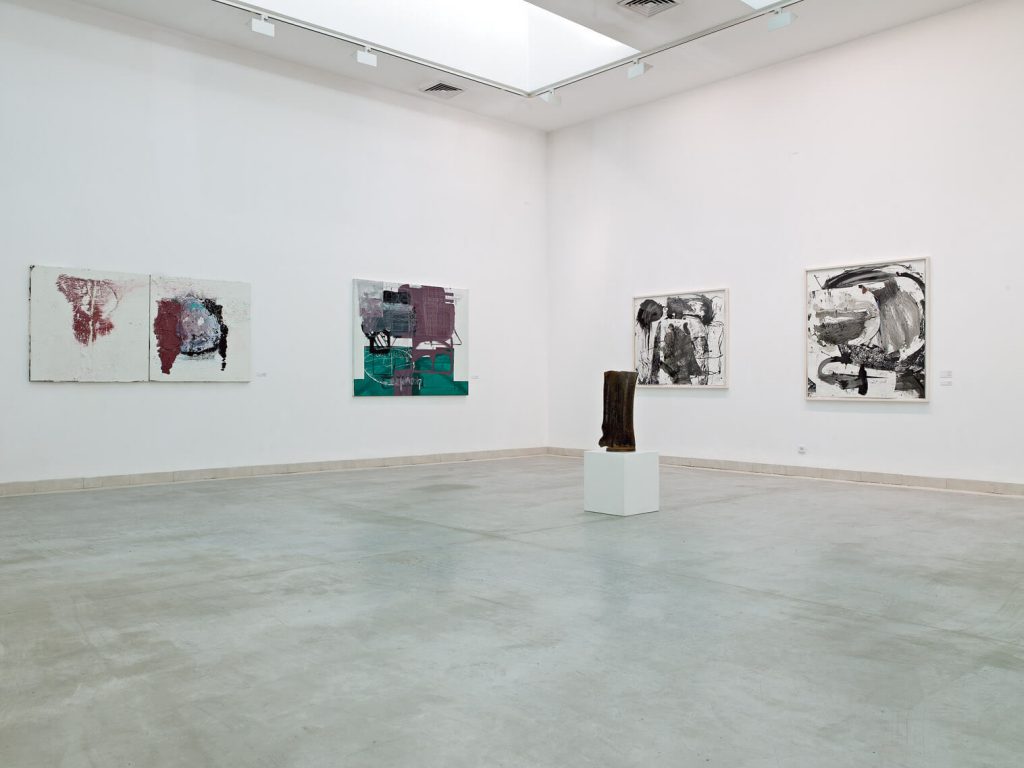
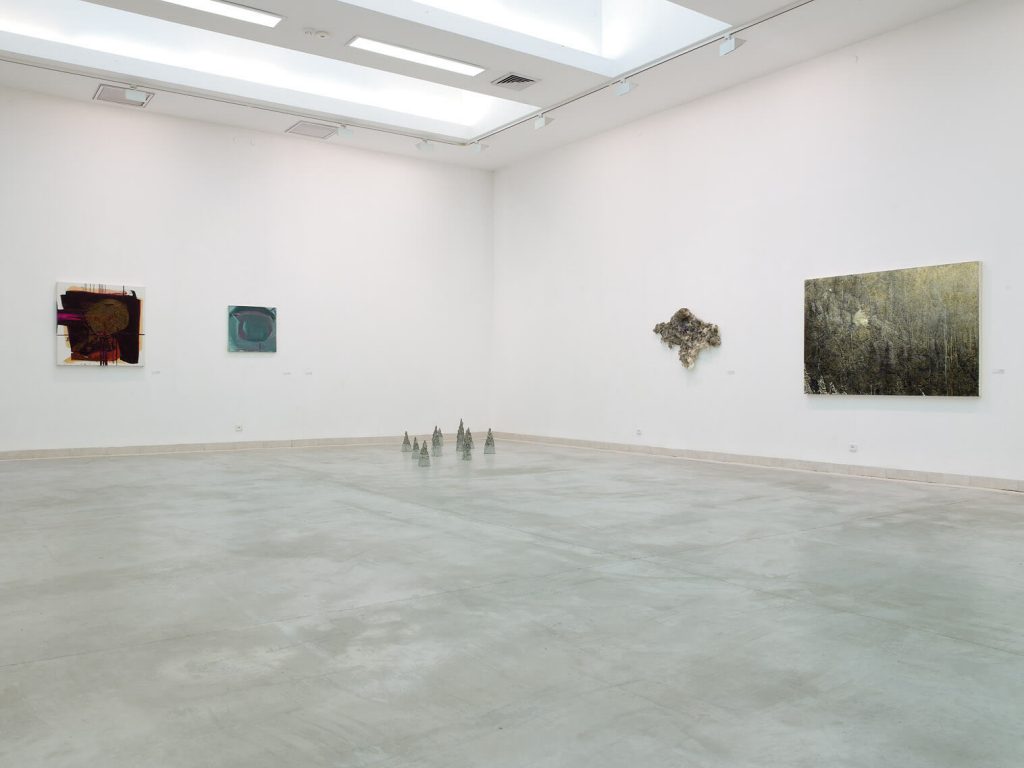
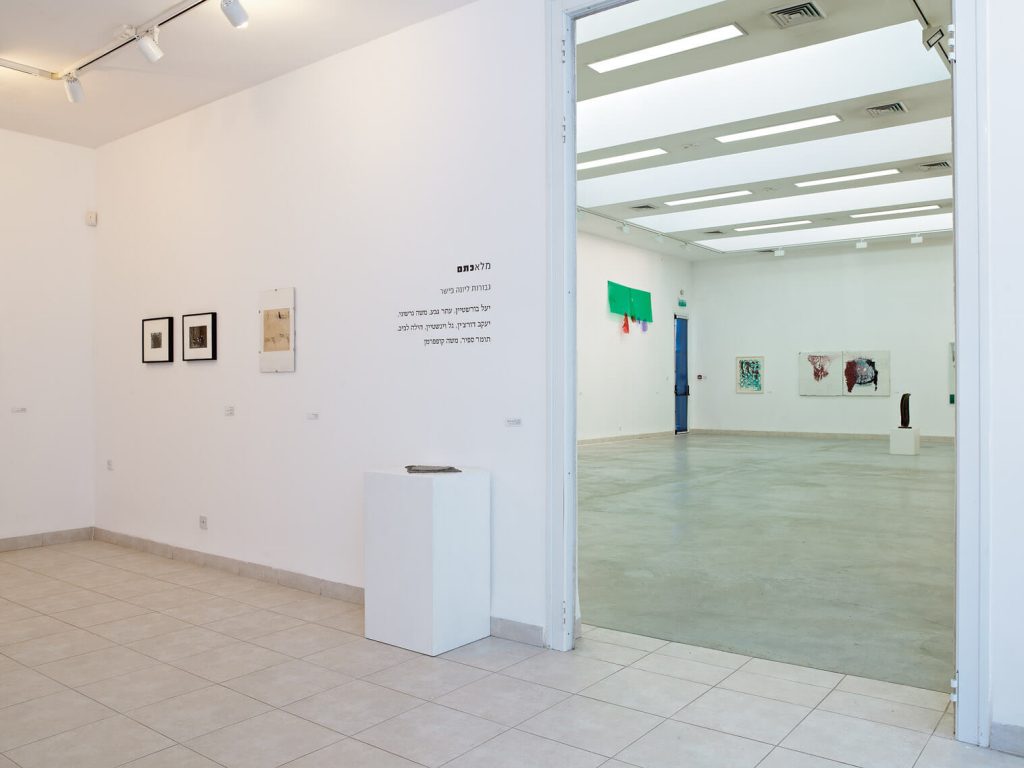
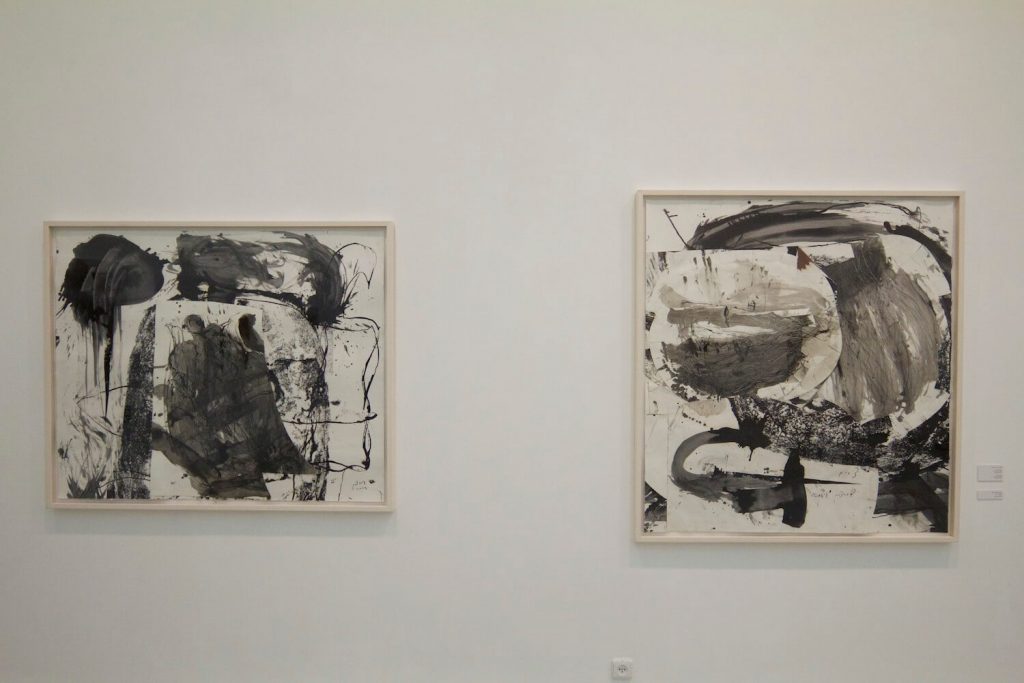
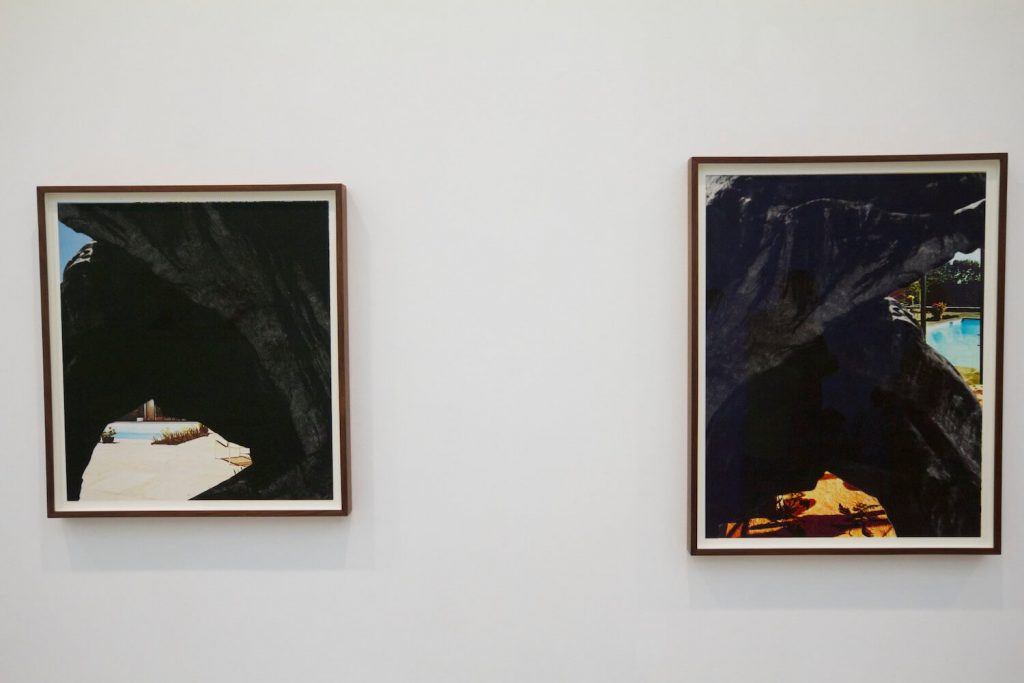
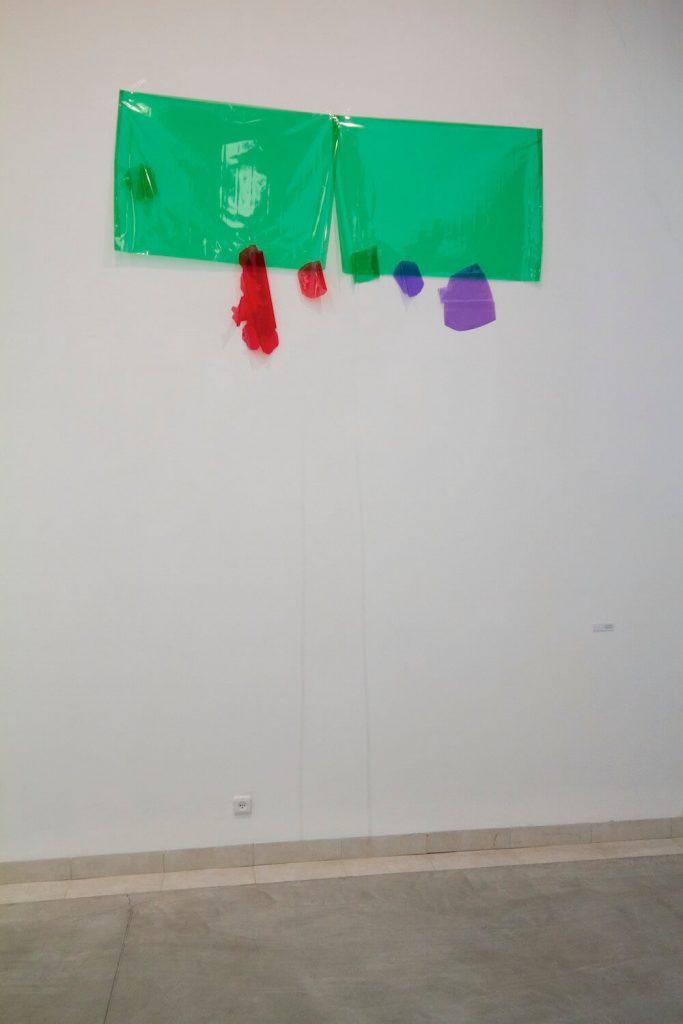
Hila Laviv
